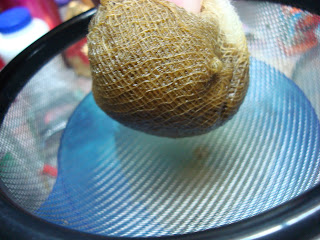Our night-time sleeping was very different from our naps. While he would refuse to nap longer than twenty minutes in a place other than mommy’s arms, he refused to sleep there at night.
Well, let me back up…
Like I said before, at about a month old he started having trouble sleeping at night. Cutting dairy really helped, but the biggest fix at that point was to co-sleep. We have a king-size bed (best investment ever), so instead of him sleeping in the
Arm’s Reach, 
I just had him snuggle. Most of the time, I slept on my right side, with little man snuggling there between me and the co-sleeper. Sometimes, he slept between my husband and me, but with my husband’s sleep apnea, I was more comfortable with the other set-up.
While little man co-slept with us, I was amazed at how our sleeping patterns worked together. Even just having him in the room accomplished this. Babies have shorter sleep/wake cycles than adults, allowing them to wake, eat, and keep getting the calories necessary for growth. Short sleep/wake cycles may also have a protective effect in regards to oxygen levels and adjusting to life outside the womb.
The difference in sleep/wake cycles is what makes parents so tired with new babies, but here mothers have an advantage. Having baby in the room allows these sleep cycles to be synced: beneficial for both mama and baby. Some research suggests this may be protective
against SIDS. And for the mother, the added benefit is waking more easily rather than from a deep sleep.
For us, here’s how it worked. Little man would feed and drift off to sleep snuggled in my arms. I’d drift off around the same time. A couple hours later, I would wake. My deep sleep cycle was shorter in response to his, so most of the time I felt pretty good. I would look down at little man, who was still asleep but begging to root around and stir. This gave me time to get ready for feeding. He would then feed and re-settle, much of the time never fully awakening. I would then drift back off as well. This synchronization may be part of the reason
breastfeeding mothers get more sleep than formula feeding mothers.We had this great set-up until little man was about three and a half months old. He started by feeding. Then he would arch his back and squirm. He would touch and explore my face. He’d coo and squeal, discovering his own voice. As cute as it was, he was starting to go from tired at the beginning of the night feed to wound up by the end. Eventually he would drift off, but he was fussing more during the drift off period. Sometimes we would have to give up for a bit and try again later, as late as 11pm.
One night, probably a week or so after this change, I cleared out the Arm’s Reach. After he fed, I scooted him over into it. At first he fussed, but after a few nights, it was getting better. If the fussing seemed to be “sleepy-time fuss,” I let him be. If it was “I need mommy, I’m scared!” fusses, I’d pull him back over and snuggle. For awhile our sleep routine came to be starting out in bed, then the Arm’s Reach for part of the night, back in bed for the rest. I tried my best to read his cues and let him sleep where he seemed to settle the easiest. After a few weeks I noticed he was spending less and less time snuggling with me in bed and more and more time sleeping contentedly by himself in the Arm’s Reach. Along the way he had realized he was definitely falling asleep snuggled with a warm mommy, but he could coo and be cute and “fight it” a little longer by himself.
Knowing the independent part of his personality, this all doesn’t surprise me too much now how easily he self-weaned from co-sleeping. At the time I was surprised and even a little embarrassed. Co-sleeping was an important part of my nurturing parenting philosophy, and I felt I must not have done it right for him to have weaned so early.
But for us, this was exactly right. He was ready and let me know in his own way. Around six months he settled into sleeping in the crib at night since he was able to crawl out of the co-sleeper. I attribute his good sleeping habits now to the security he had sleeping then. Falling asleep at a young wasn’t scary; he wasn’t hungry, cold, or wet; and he knew mommy would be right there if needed.
Recently, we got to co-sleep again. We went to the Columbus Zoo, and little man was having trouble sleeping in the hotel room. My husband suggested we have him in bed with us, so we decided to try. He took his sippy, coo’d, explored my face, and drifted off with me sleeping on my right side again. It was uncomfortable, as a sleeping toddler is much more mobile than a sleeping two month old. But it was beautiful and I loved it. I miss our nightly snuggles, but I’m glad I listened to what he was ready for.








